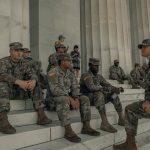After a harrowing incident involving a would-be assassin and former President Donald Trump, questions abound on Capitol Hill. Despite days of testimony and the tragic loss of a bystander, the investigation seems to be more tangled than a plate of spaghetti at an Italian restaurant.
The main character in this chaotic narrative, Thomas Matthew Crooks, managed to bypass security and make a rooftop perch just before turning the event into a scene from a bad action movie. Authorities had tagged Crooks as a person of interest but, apparently, failed to make this information relevant to security arrangements. It’s almost as if they were trying to invite disaster rather than prevent it.
Colonel Christopher Paris from Pennsylvania State Police, along with FBI Director Christopher Wray and several others, took the stand. However, the real fireworks came when former Secret Service Director Kimberly Cheatle made her appearance. She resigned shortly after her testimony, proving that the Secret Service can also file for an early exit when the heat is on. As the dust settles, experts in the field are scratching their heads, pondering how someone marked as a potential threat could waltz right to a prime shooting location.
Retired NYPD Inspector Paul Mauro raised a valid point when he questioned why Trump was allowed to take the stage despite an active threat hanging above him. Communication, apparently, was as fluid as molasses in January. Mauro argues that had the police been on top of their game, they could have delayed Trump’s appearance for just 20 minutes—plenty of time to neutralize a looming danger. But alas, it seems their communication skills were more suited for a game of telephone than for protecting a former president.
To add absurdity to the mix, Cheatle defended the Secret Service’s failure to station agents where they were most needed by claiming the rooftop was “sloped.” This explanation is about as convincing as a magician’s “disappearing” act. Critics say the real question is why there wasn’t a stronger security presence at all, considering that a murderous lunatic had already been flagged. The sheer oversight has experts asking if the Secret Service was working on a “who could possibly get past security?” reality show.
Meanwhile, the Pennsylvania state police commissioner asserts that there was a tactical squad on alert before the rally, albeit their orders seemed about as clear as mud. The ongoing investigations are like a long cold dish of leftovers—everyone is trying to figure out where the problem lies. Whatever the outcome, one thing is certain: when it comes to protecting public figures, the special agencies involved need a serious reality check. This isn’t just about finding the bad guy; it’s about making sure that when alarms are ringing, they are not relegated to the background noise of bureaucratic mismanagement.




